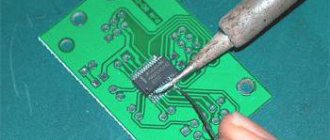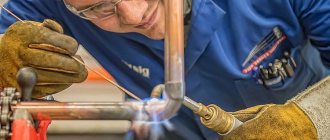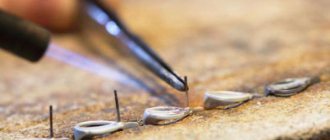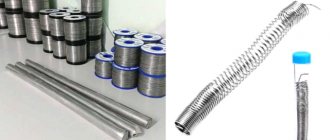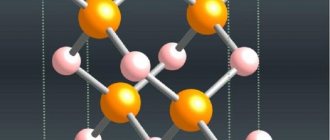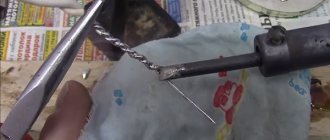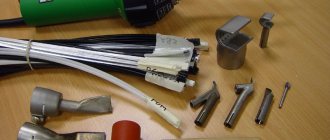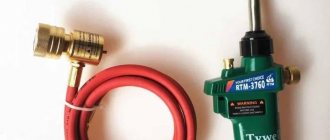Soldering aluminum, as many experts rightly believe, is a rather difficult technological process to perform. Meanwhile, this opinion can be considered correct only in relation to those situations when they try to solder aluminum products using solders and fluxes that are used to join parts made of other metals: copper, steel, etc.
If you use a special flux for soldering aluminum, as well as the appropriate solder, then this technological process does not present any particular difficulties.
Features and principles of the process
The technological process of soldering is complicated by the low temperature value of the material melting . Parts will very quickly lose strength when heated, and the design will reduce stability when the temperature reaches 300 degrees. If you use low-melting solders, which consist of cadmium, bismuth, indium, tin, then they will be very difficult to come into contact with aluminum, and good strength will not be provided.
Metals that combine zinc have very good solubility . In this case, the soldered materials will be highly reliable. Before starting soldering, the material should be cleaned of oxides and dirt. For this purpose mechanical action is used. You can use a brush or use special fluxes that have a strong composition. Before starting the procedure, it is necessary to tin the areas that will be treated. If the coating is tin, the part will be protected from the formation of oxides.
To reliably solder aluminum products, you need to select the right heating tool. And the reliability of the connection also depends on the choice of alloy and flux for soldering aluminum.
Aluminum alloys with additives
High-temperature solder containing 66% pure aluminum, 28% copper and 6% silicon is effective for soldering. It was made in Russia. A significant concentration of the base metal, identical to the material of the working parts, increases solubility and penetration of the melt.
The base of the weld, which includes copper and aluminum, is strengthened by the presence of silicon. The connection formed using aluminum solder does not corrode and has good mechanical properties.
The addition of silicon increases the melting point of solders. Thus, a composition of 87% aluminum and 13% silicon melts at temperatures of about 600 ℃. This type of imported product goes on sale ready for use. Solder with flux is more expensive. The increased price is compensated by the high quality of the seam.
An American composite of 9 components gives excellent soldering results. The rods melt at a temperature of 347 ℃, increasing in volume by 10%. The resulting seam is distinguished by its ductility, which is 3 times higher than that of joints made from other alloys.
High-temperature soldering is carried out when working with massive parts made of aluminum or products made of alloys that melt only under strong heat. Heating is provided by gas burners operating on pure hydrocarbons or their mixtures with oxygen. You can use a regular soldering iron.
Soldering methods
Soldering of aluminum materials is carried out using an electric soldering iron, blowtorch or gas torch . There are several ways to solder aluminum:
- Using solder.
- With rosin.
- Using the electrochemical method.
With rosin
This option for soldering an aluminum surface must be used for small part sizes . The cleaned area must be coated with rosin and placed on sanding paper of medium grit. The wires are pressed on top with the tinned tip of a heated soldering iron. This action must be performed several times, after which the soldering procedure itself is performed. You can also use a rosin solution in diethyl ether.
In this option, the end of the soldering iron does not need to be removed from the embedded end, and you just need to add rosin on top. If you need to connect thin aluminum wires, then a soldering iron with a power of 50 W is suitable. If the thickness of the aluminum is approximately 1 mm, then the soldering iron must be selected at 100 W, and for parts thicker than 2 mm, preheating of the joint will be required.
Using solder
This method is very common and is often used in electrical engineering, car repair, and other products . Before starting the process, it is necessary to coat the material with an alloy, and then the tinned elements are connected. Parts that have been previously peeled are connected to each other and to other alloys and metals.
You can use light alloy solders that contain zinc, tin and cadmium. And also recently, refractory materials based on aluminum have been very actively used. Light alloy compounds are used because aluminum products can be soldered at temperatures up to 400 degrees. This will allow you not to spoil the properties of the material and maintain strength. Compositions with cadmium and tin will not allow for good contact, and they will also be susceptible to corrosion. Refractory materials do not have such disadvantages.
Electrochemical method
If you use the electrochemical method, then you will need a device for performing electroplating . This will result in copper plating of the surface. If there is no such device, then you will have to process the part yourself. To do this, you will need to sand the required surface and apply a few drops of copper sulfate. And only after that the negative pole of an independent power supply is connected to the product.
You can use a regular battery or accumulator, as well as any other electrical rectifier. A cleaned copper wire, which has a diameter of 1 mm and is located in an insulated stand, is connected to the positive terminal. When the electrolysis process occurs, copper begins to settle on the part, and only after that the area can be tinning and drying with a soldering iron. And after that you can easily solder the required tinned place.
HTS-2000 – solder for soldering aluminum and its alloys
The American product is produced in the form of a rod and consists of nine alloys. HTS-2000 solder is a product of the latest advances, with which soldering can be carried out without flux. It easily penetrates through underlying impurities that competitors' formulations cannot penetrate.
When using the HTS-2000 product, no special skills are required, which means its high quality. When heated, the solder easily penetrates the aluminum oxide film formed on the surface and creates strong molecular bonds.
Due to the fact that the electrochemical potential between aluminum and solder is small, the material is not afraid of corrosion. The service life of products with such a connection is more than 10 years.
Application area of the HTS-2000 product:
- restoration of parts after chips, breakage, wear;
- repair of car crankcases;
- repair of aluminum boat bottoms;
- repair of air conditioner pipes, compressors, pumps;
- soldering of copper and aluminum elements in various combinations;
- repair of aluminum fuel tanks;
- restoration and repair of cylinder heads;
- radiator tube repair;
- restoration of threaded holes.
In addition, using this solder you can repair aluminum stairs, gutters, and boats. Quite often it is used when repairing diesel engines.
It is important to know that experts do not recommend using HTS-2000 solder for soldering aluminum with copper. As a result of this procedure, electrochemical corrosion occurs, which quickly destroys the metal.
The material is used with an oxy-acetylene or propane torch . It is the strongest, fastest and at the same time simplest solder for soldering among other similar alloys.
Solders, fluxes, materials
Tin can be used for soldering aluminum , but only in cases where there is a highly active flux, and the areas have been thoroughly cleaned. Tin compounds must be additionally coated with special compounds, since they exhibit poor strength and poor corrosion protection.
Very good solder joints can be achieved by using silicon, zinc, aluminum or copper solder . Such materials are produced by both domestic and foreign manufacturers. Russian brands of solders are produced under the name TsOP40. According to GOST, they contain 60% tin and 40% zinc, and there is also 34A solder. It contains 66% aluminum, 6% silicon and 28% copper. The composition will give good strength to the contact area and provide reliable corrosion resistance. Foreign compounds include HTS-2000. This product is very convenient to use.
Such alloys can be used with large-sized parts, as well as with high heat dissipation, if you use a heating pad or objects made of aluminum alloys with high-temperature melting. If you have never soldered objects before, then it is advisable to watch special training videos that will help answer many questions.
In addition to solders, it is also necessary to use special fluxes , which contain zinc, fluorine, ammonium burate, as well as triethanolamine and other elements . Popular domestic fluxes include F64, which has good chemical activity. Usually this product is used even without first cleaning the parts from the oxide film. You can also use 34A, which contains lithium, zinc and potassium chloride, as well as sodium fluoride.
Flux
When choosing a flux, it is necessary to take into account that not all of them can be active towards aluminum. We can recommend using products from a domestic manufacturer for such purposes - F-59A, F-61A, F-64, they consist of ammonium fluoroborates with the addition of triethanolamine. As a rule, the bottle is marked “for aluminum” or “for aluminum soldering.”
Domestic flux
For high-temperature soldering, you should purchase flux produced under the brand 34A. It consists of potassium chloride (50%), lithium chloride (32%), sodium fluoride (10%) and zinc chloride (8%). This composition is most optimal if high-temperature soldering is performed.
Recommended flux for packing at high temperatures
Preparation of material
To achieve a good quality connection, you need to use not only the right technologies, but also be able to properly prepare the surface to be treated . All dirt and oxide films must be removed. Mechanical processing is carried out using sandpaper or a metal brush, and sometimes a stainless steel mesh and a grinding machine are used. You can also use different acid solutions.
The surface must be degreased using solvent, acetone or gasoline. When an aluminum surface is cleaned, an oxide film immediately forms. However, its thickness will be lower than the original one, and therefore the soldering process will be easier.
Features of work on aluminum joining
When using flux for soldering aluminum, you need to have an idea of some concepts and terms used for this work. So, when using flux for soldering aluminum for work, remember that this is a kind of mixture where organic or inorganic components are present, the main task of which is to ensure a strong connection and adhesion of the physical and chemical nature of the solder to ensure a strong connection of a homogeneous group of metal surfaces, and sometimes different by the nature of metal materials.
Using flux for soldering aluminum
In order for the aluminum soldering flux f 64 to suit the processing material, you need to know some physical and chemical characteristics and properties of aluminum:
- Aluminum has a high degree of thermal conductivity as well as sufficient electrical conductivity.
- Aluminum is very resistant to organic and inorganic solvents.
- The material has sufficient plasticity, that is, it bends and changes shape, which in turn allows the production of various groups of products - wire, technological sheets, bent-shaped products, etc.
- The melting point is one of the lowest, only +660 C.
Taking into account the above parameters, we can conclude that the flux for soldering aluminum must have a special structure of interaction with the surface.
Tools
If you need to connect aluminum products at home, then it is advisable to use an electric soldering iron. This is a universal device that very conveniently allows you to solder wires, repair small tubes and other elements. The adaptation requires a minimum amount of space. There must also be electricity in the house. If you need to repair a large-sized device, then use a gas torch for soldering aluminum, which uses butane, argon and propane. To solder objects at home, a standard blowtorch is suitable.
If gas burners are used, then it is necessary to constantly monitor the flame, which represents a balanced supply of gases and oxygen. If the correct gas mixture is present, the flame will be bright blue. A dim hue will indicate that there is excess oxygen.
Castolin AluFlam 190 – solder from France
The product is used as a filler rod for repairing aluminum parts and high-temperature brazing.
Technical characteristics of Castolin AluFlam 190 solder:
- It has high strength and exceptional capillary fluidity.
- Characterized by excellent electrical conductivity.
- The color matches many aluminum alloys.
Castolin AluFlam 190 is recommended for high strength connections:
- aluminum alloys with silicon;
- forged aluminum;
- sheets;
- pipelines.
It cannot be used for aluminum alloys containing more than 1.5% magnesium, and for parts that require subsequent anodizing.
Due to its ability to form a tough and strong weld, Castolin AluFlam 190 solder can be used in a wide variety of applications. It can be used to repair window frames and furniture, in the transport industry, to repair refrigeration equipment, gas lines, grilles, air conditioners and much more.
With the Castolin AluFlam 190 product, experts recommend using Castolin 190 Flux.
Aluminum soldering steps
Soldering aluminum objects is no different from joining other metal materials:
- First you need to clean and degrease the area of the future connection.
- Afterwards, all elements are installed in working position.
- Flux is applied to the required area and the product begins to be heated using a soldering iron or torch.
- When there is an increase in temperature, the solder bar melts; it must constantly touch the surface of the elements, thereby controlling the process.
It is necessary to remember that soldering should be done in a well-ventilated area , since during the heating process dangerous compounds are released.
If flux-free solder is used, then you need to know about some of the nuances of the work. To prevent the oxide film from interfering, you need to use the end of the rod to make scratching movements along the area of the element. Thus, the oxide integrity will be compromised and the solder will come into contact with the metal being processed.
The oxide layer can be destroyed in other ways. The area to be treated must be scratched with a wire brush or stainless steel rod.
To ensure maximum strength of the connection, it is necessary to treat the areas with tinning.
Selection of fluxes
Taking into account the specifics of soldering aluminum parts, the choice of fluxes must be approached carefully.
There are domestic products consisting of several components. They provide effective cleaning of parts and prevent oxidative processes when heated. This is especially true when using tin and lead solders, which are known to be susceptible to oxidation.
Good penetrating ability is provided by a multicomponent flux made from ammonium and zinc fluoroborates, triethanolamine, and additives. The product has an affordable price. Its effectiveness has been tested many times in practice.
A well-known high-temperature flux consists of potassium, lithium and zinc chlorides; sodium fluoride. The dry mixture is poured into the soldering work area on a stick, waiting for uniform melting and mixing with the solder mass.
Safety precautions
Before you start working with a soldering iron, you should always first study the safety rules.
- You only need to work with the window open. Because you can get poisoned due to secretions during work.
- There should be nothing flammable around. If a soldering iron is dropped onto paper, for example, it can cause a fire.
- The device should be held exclusively by the special handle, since during operation it becomes very hot, which can lead to burns.
- Children should not be allowed near the soldering iron. The device should always be kept in a place that is difficult for the baby to reach.
- The device can only be lowered on a special stand during breaks between soldering. If the soldering iron is placed on a table, a fire may occur.
Follow these simple rules, and no problems will arise during operation.
To perform high-quality soldering of aluminum materials at home, it is necessary to fully comply with the technology. If you choose high-quality methods, solders, fluxes and materials, then the result will be positive.
Scope of application
The use of flux for soldering f 64 is quite extensive, and it is enough to indicate several technological areas where the aluminum base is widely used:
- Creation of heat transfer systems, for example, car radiators.
- In energy systems of a closed space, for example, the formation of a closed electrical circuit.
- Connection of live parts that were broken under the influence of mechanical force, for example, wires of a common main electrical network.
- Creation of technological structures that provide communication based on the principle of electrical conductivity.
Flux F 64
Solders, the basis for high-quality joining of aluminum products
As you can see, do-it-yourself flux for soldering will allow you to repair both complex and problematic sources of damage, as well as easy areas and components. The following traditional materials are used as solder:
- Tin;
- Alloy using zinc;
- Cadmium based alloy.
The melting point of the above listed materials is in the range from +200 C to +400 C, and for these purposes you can use a not very powerful soldering tool. Additionally, refractory substances, which contain copper, zinc and even silicon, are used as solder.
